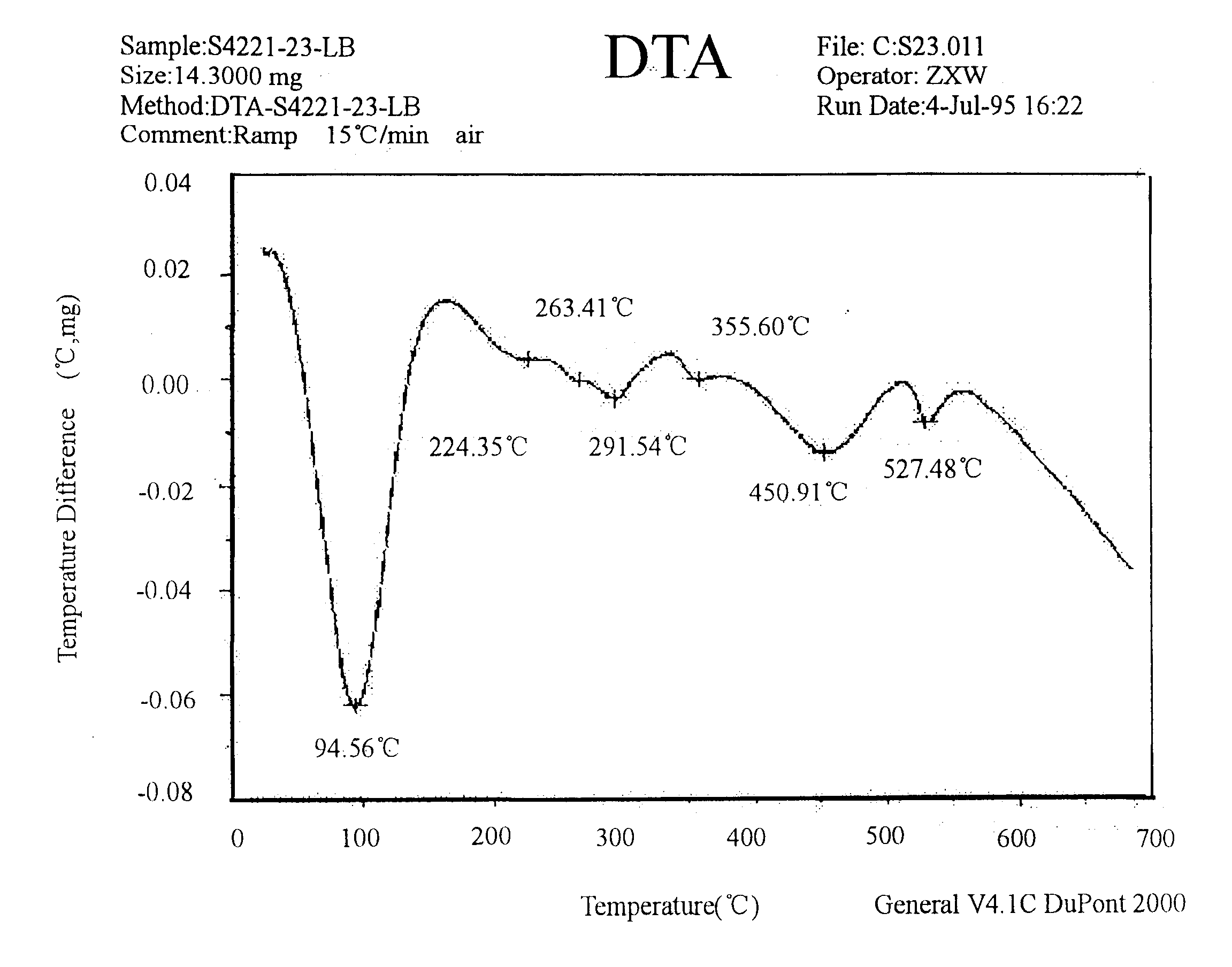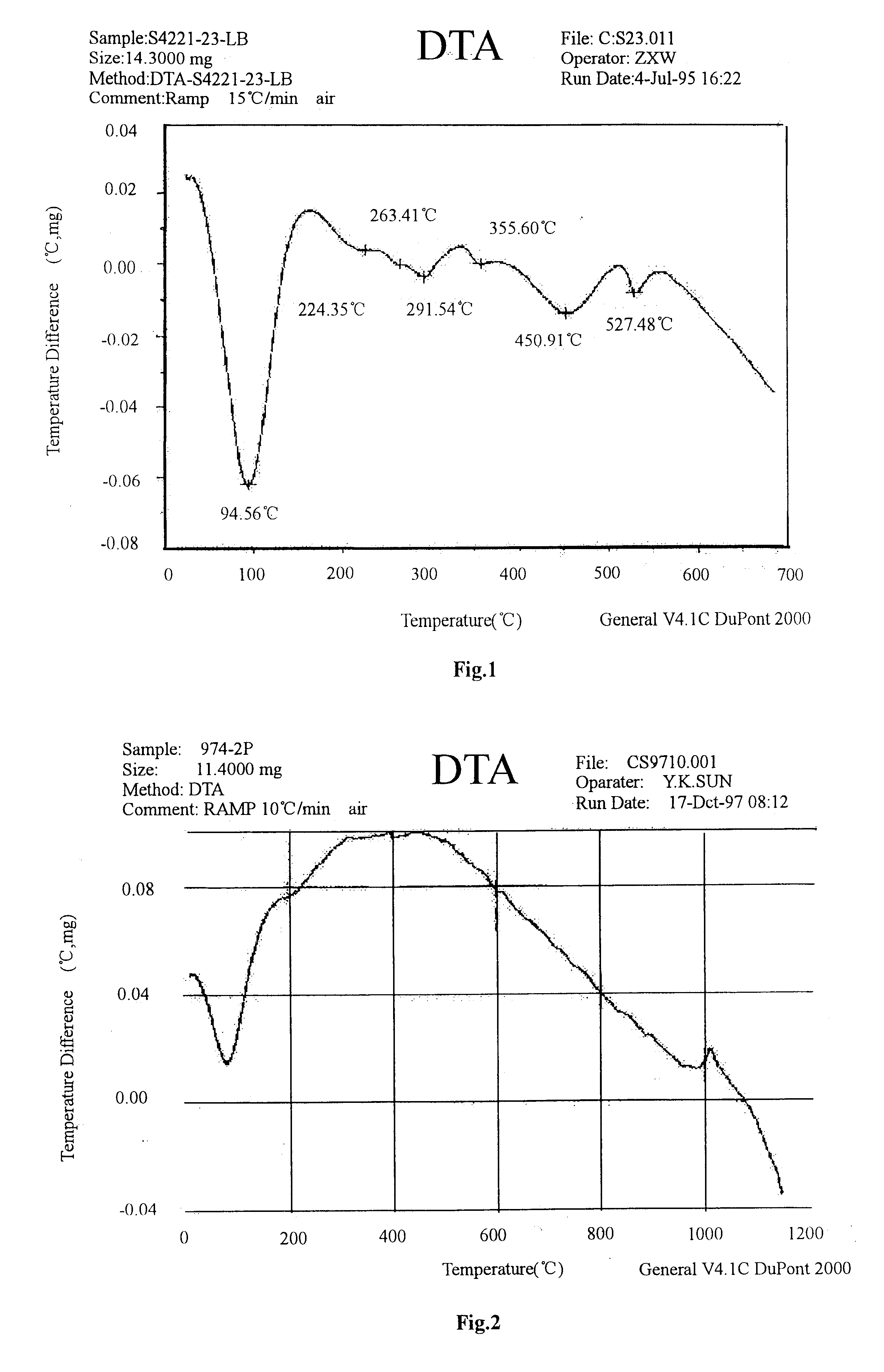Amorphous silica-alumina, a carrier combination and a hydrocracking catalyst containing the same, and processes for the preparation thereof
a technology of amorphous silica alumina and a carrier combination, which is applied in the direction of hydrocarbon oil cracking, metal/metal-oxide/metal-hydroxide catalysts, physical/chemical process catalysts, etc., can solve the problems of low acid site number, damage to the pore structure, and no product disclosed in the prior art possesses both functions, etc. , to achieve the effect of large specific surface area, good activity and high mid-distillation selectivity ratio
- Summary
- Abstract
- Description
- Claims
- Application Information
AI Technical Summary
Benefits of technology
Problems solved by technology
Method used
Image
Examples
example 1
This example relates to the preparation of the amorphous silica-alumina product S-1 according to the invention. 4000 g of solid alumina sulfate was added to 7.5L of distilled water with heating and stirring till it was dissolved to form an aluminum sulfate solution (a) with a concentration of 4 g Al.sub.2 O.sub.2 / 100 ml. Some concentrate aqueous ammonia was diluted with an appropriate amount of distilled water into about 10% dilute aqueous ammonia (b). 10L of distilled water was added to 4.8L of concentrate sodium silicate (industrial grade, modulus 2.0) to form a dilute sodium silicate solution (c). A 10L reactor made of steel containing 2L of distilled water was heated to 70.degree. C. with stirring, in the meantime, the valves of containers containing aluminum sulfate solution (a) and aqueous ammonia (b) respectively were opened. The flow of (a) was set at such a rate that the neutralization reaction in this system was carried on for 1 hr to prepare 600 g of the amorphous silica...
example 2
This example relates to the preparation of the amorphous silica-alumina product S-2 according to the invention. 8000 g of solid aluminum sulfate was added to about 7.5L of distilled water with heating and stirring till it was dissolved to form an aluminum sulfate solution (a2) with a concentration of 8 g Al.sub.2 O.sub.3 / 100 ml. Some concentrate aqueous ammonia was diluted with an appropriate amount of distilled water into about 10% dilute aqueous ammonia (b). A 10L reactor made of steel containing 2L of distilled water was heated to 70.degree. C. with stirring, in the meantime, the valves of containers containing the aluminum sulfate solution (a2) and aqueous ammonia (b) respectively were opened. The flow of (a2) was set at such a rate that the neutralization reaction in this system was carried out for 2 hrs to prepare 600 g of the amorphous silica-alumina product, with the flow of (b) being instantly adjusted to maintain the pH value of this system at 7.0, and the temperature of ...
example 3
This example relates to the preparation of the amorphous silica-alumina product S-3 according to the invention. 3.2L of a concentrate solution of aluminum sulfate (industrial grade) was added to 4.2L of distilled water with heating and stirring to produce an aluminum sulfate solution (a3) with a concentration of 6 g Al.sub.2 O.sub.3 / 100 ml. Concentrate aqueous ammonia was diluted with an appropriate amount of distilled water into about 10% dilute aqueous ammonia (b). A 10 L reactor made of steel containing 2 L of distilled water was heated to 70.degree. C. with stirring, in the meantime, the valves of containers containing aluminum sulfate solution (a3) and aqueous ammonia (b) respectively were opened. The flow of (a3) was set at such a rate that the neutralization reaction in this system was carried on for 40 mins to prepare 600 g of the amorphous silica-alumina product, with the flow of (b) being instantly adjusted to maintain the pH value of this system at 9.0, and the temperatu...
PUM
| Property | Measurement | Unit |
|---|---|---|
| Length | aaaaa | aaaaa |
| Length | aaaaa | aaaaa |
| Length | aaaaa | aaaaa |
Abstract
Description
Claims
Application Information
 Login to View More
Login to View More - R&D
- Intellectual Property
- Life Sciences
- Materials
- Tech Scout
- Unparalleled Data Quality
- Higher Quality Content
- 60% Fewer Hallucinations
Browse by: Latest US Patents, China's latest patents, Technical Efficacy Thesaurus, Application Domain, Technology Topic, Popular Technical Reports.
© 2025 PatSnap. All rights reserved.Legal|Privacy policy|Modern Slavery Act Transparency Statement|Sitemap|About US| Contact US: help@patsnap.com


